Disclosure: This article contains affiliate links. We may earn a commission from purchases at no extra cost to you, which helps our travel content.
Shanghai often conjures images of futuristic skylines and the historic waterfront Bund, but the soul of this megacity lies in its cultural contrasts and hidden corners. During my recent fall excursion with my law school friend Lin, whose family emigrated from Shanghai to Philadelphia when she was a child, I discovered a Shanghai that most tourists never see. As we navigated the city's metro system and wandered through neighborhoods where generations of families have lived through China's remarkable transformations, I was struck by how Shanghai embodies both preservation and progress. The city offers a masterclass in cultural resilience – something I've observed in communities across the American Southwest and now witnessed in this Asian metropolis. Whether you're traveling as a couple seeking authentic experiences or simply wanting to go beyond the glossy tourist facade, these ten cultural experiences will connect you to Shanghai's beating heart and the stories of its people.
1. Navigate the Labyrinthine Longtangs
While the French Concession's tree-lined avenues attract most visitors, the true pulse of old Shanghai beats within its longtangs – the labyrinthine lane house communities that once housed most of the city's population. These narrow alleyways flanked by shikumen (stone-gated) houses represent Shanghai's unique architectural heritage – a fusion of Chinese and Western design that emerged in the early 20th century.
Lin and I spent a misty morning exploring Tianzifang, which has been preserved as an arts district, but the more authentic experience awaited in the lesser-known Jing'an longtangs. Here, elderly residents played mahjong in communal spaces while laundry fluttered overhead like prayer flags. An elderly woman invited us to try her homemade cong you bing (scallion pancakes) from a makeshift street-side griddle – a moment of connection that transcended our language barrier.
What struck me most was the sense of community resilience. As a public defender, I've witnessed how shared spaces foster solidarity in challenging circumstances, and these longtangs embody that spirit. Many residents have lived here for generations, their families weathering political changes while maintaining traditions within these intimate neighborhoods.
For navigation through these complex networks, I relied heavily on my pocket translator which proved invaluable for communicating with locals who eagerly shared stories about their homes and histories.
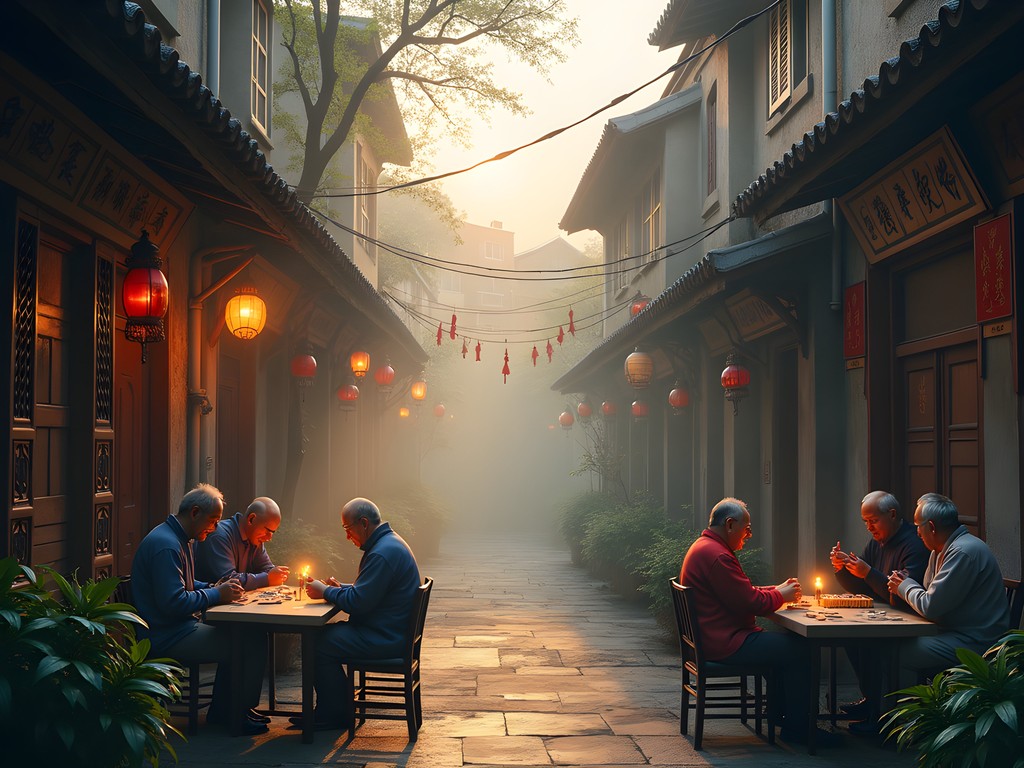
💡 Pro Tips
- Visit longtangs in the morning when locals are out shopping and socializing
- Respect privacy – many areas are still residential homes
- Bring small gifts (fruit or candies) if you're invited into someone's home
2. Experience Shadow Puppetry at the Shanghai Puppet Theater
In the heart of the city lies a cultural treasure that captivated me as both a parent and a storytelling enthusiast – the Shanghai Puppet Theater. While many travelers miss this gem, it offers one of the most authentic glimpses into traditional Chinese performance art that dates back over 2,000 years.
The theater specializes in piying xi (shadow puppetry), where intricate leather puppets cast silhouettes against illuminated screens while performers narrate ancient folktales. What makes this experience special is the behind-the-scenes workshop where master puppeteers demonstrate their craft. Lin translated as an elderly artisan explained how each puppet requires weeks of meticulous cutting and painting to create the delicate perforations that give each character its distinctive appearance.
As someone who's used public murals as educational tools with my own children, I was fascinated by how these shadow plays have historically served as visual storytelling devices for conveying moral lessons and cultural values across generations. The theater offers performances in Mandarin, but the visual nature of shadow puppetry transcends language barriers.
The most moving moment came during a performance of 'The Butterfly Lovers,' China's equivalent to Romeo and Juliet. Watching couples around us squeeze hands during emotional scenes reminded me that some stories resonate universally across cultures – a beautiful reminder of our shared humanity.
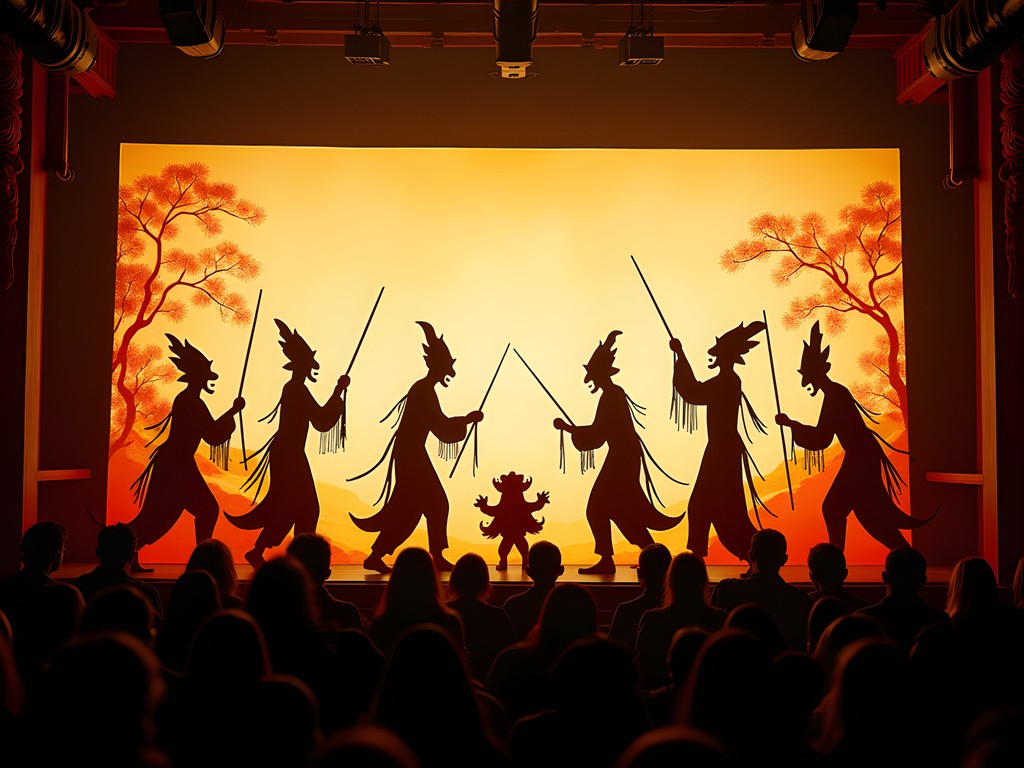
💡 Pro Tips
- Book tickets at least one day in advance for English-subtitled performances
- Arrive 30 minutes early to see the puppet-making demonstrations
- Performances last about 70 minutes – perfect for a cultural evening activity
3. Join a Traditional Tai Chi Session at Gongqing Forest Park
While tourists flock to the manicured Yu Garden or People's Square to observe morning tai chi, Lin suggested we venture to Gongqing Forest Park in northeastern Shanghai where locals practice this ancient art form far from tourist cameras. Arriving at 6:30am, we found ourselves amid dozens of Shanghainese of all ages moving in synchronized harmony beneath dawn-filtered camphor trees.
What began as observation quickly became participation when a silver-haired gentleman named Mr. Wu motioned for us to join his group. Despite my initial clumsiness (much to the amusement of elderly practitioners who moved with liquid grace), the experience became one of my most meaningful connections to Shanghai's living heritage.
Mr. Wu explained through Lin's translation that he had practiced tai chi for over 50 years, beginning during the Cultural Revolution when many traditional practices were discouraged. His story of cultural preservation through personal practice reminded me of indigenous elders I've met throughout the American Southwest who maintained ceremonial knowledge through periods of suppression.
The physical benefits of tai chi are well-documented, but what struck me was the social ecosystem it creates – after practice, participants gathered for breakfast, sharing thermoses of tea and homemade rice balls. This wasn't just exercise but a community ritual that strengthened social bonds across generations.
I've continued my practice since returning home, using a instructional mat that helps me remember the form sequences Mr. Wu patiently taught us that misty Shanghai morning.
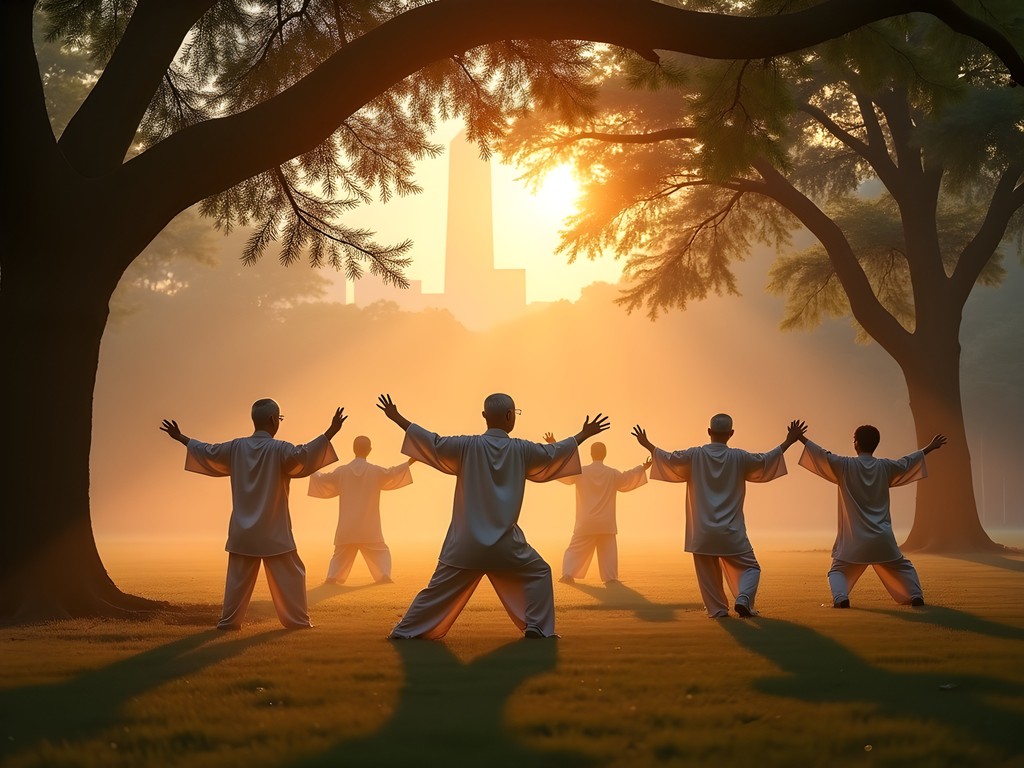
💡 Pro Tips
- Arrive between 6-7am when most groups practice
- Wear comfortable, breathable clothing and flat shoes
- Bring a small gift if you plan to join regularly (tea is always appreciated)
4. Explore Shanghai's Urban Farming Revolution
My professional interest in sustainable community development drew me to one of Shanghai's most innovative cultural shifts – its urban farming revolution. While most visitors never venture to the Sunqiao Urban Agricultural District, this remarkable area represents Shanghai's creative response to food security challenges in a megacity.
Through connections from Lin's university friend who works in sustainable architecture, we toured several vertical farming operations where traditional Chinese agricultural knowledge meets cutting-edge technology. One particularly fascinating operation, Sprout Stack, combines aquaponic systems with vertical growing techniques to produce vegetables for local markets while using 95% less water than conventional farming.
What makes this a cultural experience rather than merely a technological one is how these farms have become community hubs. Families participate in harvest festivals that blend ancient agricultural celebrations with modern sustainability education. Elderly farmers who once worked rural land now serve as knowledge-keepers, teaching traditional growing methods that are being integrated with new technologies.
The parallels to smart-city initiatives I've observed on tribal lands in Arizona were striking – in both contexts, communities are revitalizing traditional ecological knowledge while embracing innovation. For visitors interested in sustainability, I recommend bringing a reusable produce bag to purchase fresh vegetables directly from these urban farms – the flavor difference is remarkable, and you're supporting a vital community initiative.
Most moving was our conversation with Ms. Zhao, a third-generation farmer who now manages a vertical growing operation. "We're not just growing food," she told us, "we're growing a new relationship between city people and the land that feeds them."

💡 Pro Tips
- Contact Sunqiao Agricultural District at least 3 days ahead to arrange a tour
- Visit on Saturdays when community harvest markets are typically held
- Wear closed-toe shoes as some areas can be muddy
5. Attend a Tea Ceremony at Floating Cloud Teahouse
While Shanghai offers countless tea houses catering to tourists, Lin directed us to Floating Cloud Teahouse tucked away in the former French Concession – a sanctuary where the ancient ritual of Chinese tea ceremony continues without performative elements for foreign guests. The unassuming entrance belies the cultural treasure within: a traditional wooden interior with scholars' rocks and miniature landscapes creating an atmosphere of contemplative beauty.
What distinguishes this experience is its authenticity and depth. Unlike tourist-oriented venues, Floating Cloud is frequented primarily by local tea enthusiasts. Our host, Ms. Jiang, has studied tea culture for over thirty years and approaches each ceremony as both art and meditation. She explained the significance of every movement – from the warming of cups to the precise pouring technique – as expressions of harmony, respect, and mindfulness.
As a lawyer accustomed to high-pressure environments, I found profound value in this practice of deliberate slowness. The ceremony unfolded over two hours as we progressed through five steepings of an exquisite Phoenix Mountain oolong, each revealing different flavor notes and prompting philosophical discussions about perception and change.
Particularly meaningful was learning about gongfu cha – literally "making tea with skill" – as a practice of cultural resistance during periods when traditional customs were suppressed. Ms. Jiang shared how her grandmother maintained these rituals in private, preserving cultural knowledge through political turbulence – a powerful reminder of how everyday practices can become acts of cultural preservation.
I've continued this practice at home using a gongfu tea set that helps me maintain the mindfulness I discovered in that serene Shanghai teahouse.

💡 Pro Tips
- Make reservations at least two days in advance as the teahouse only accommodates 8 guests per session
- Expect to spend 2-3 hours for a complete ceremony
- Avoid wearing strong perfumes that might interfere with the tea aromas
6. Witness Traditional Craftsmanship at Yuyuan Mending Workshop
Just blocks from the commercialized sections of Yuyuan Garden lies a cultural treasure I discovered through Lin's family connections – a traditional mending workshop where the ancient craft of textile repair continues in the hands of master artisans. While tourists shop for mass-produced souvenirs nearby, this humble workshop preserves techniques dating back to the Ming Dynasty.
Master Zhang, a sixth-generation textile restorer, welcomed us into a space where time seems suspended. The walls displayed photographs spanning decades – his ancestors repairing imperial garments alongside images of his father restoring textiles during the Cultural Revolution. What struck me most was how this craft represents Shanghai's resilience through dramatic historical changes.
The workshop specializes in jin xiu (brocade) repair, where damaged threads in antique textiles are meticulously replaced using traditional looms and techniques. Master Zhang demonstrated how a single repair might require weeks of work, with specially dyed silk threads matched precisely to centuries-old fabrics. The patience and precision reminded me of Navajo weaving demonstrations I've witnessed – cultural practices where the process itself becomes a form of meditation.
As a public defender who often sees the disposable nature of modern consumer culture, I found profound value in this commitment to preservation and repair. Master Zhang explained that his work isn't merely about restoring objects but about maintaining cultural continuity – each mended textile represents stories, traditions, and family histories preserved for future generations.
The workshop accepts commissions for textile repair and offers occasional demonstrations for visitors genuinely interested in traditional crafts. For travelers seeking authentic cultural experiences, this represents Shanghai's living heritage continuing quietly alongside its modernization.
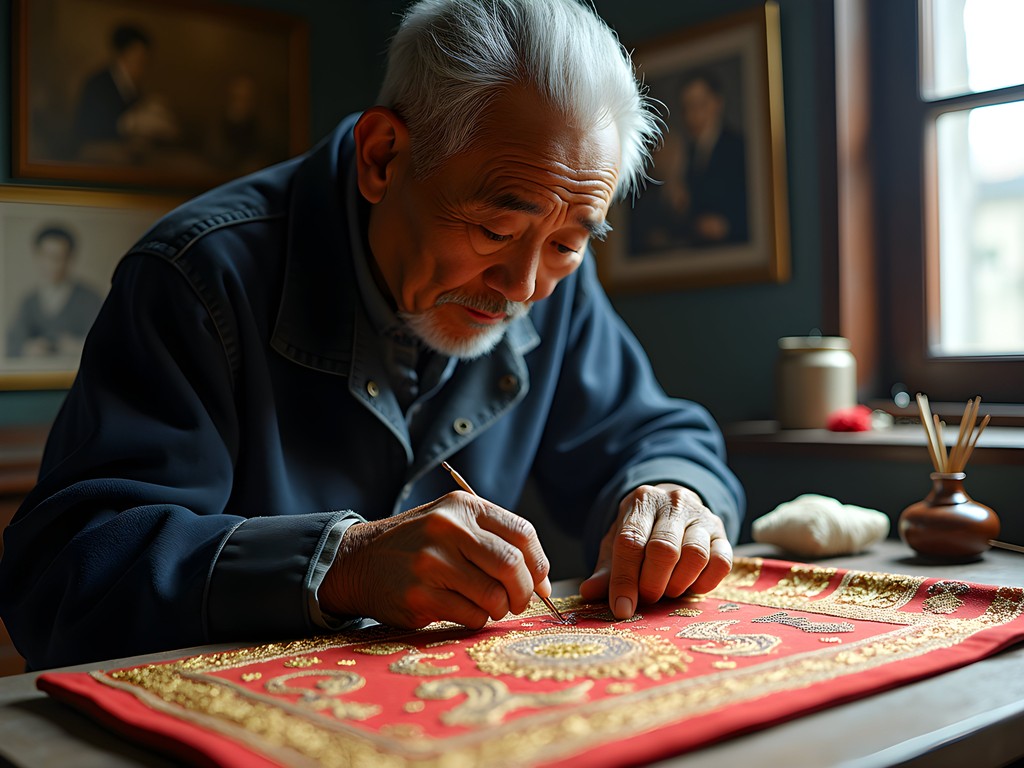
💡 Pro Tips
- Visit weekday mornings when the workshop is less busy
- Bring any textile items needing repair – they accept small commissions from visitors
- Photography is permitted but ask permission before taking close-ups of works in progress
7. Explore Shanghai's Jewish Heritage in Hongkou
Few visitors realize that Shanghai houses a remarkable chapter of Jewish history – one that speaks to the city's role as a sanctuary during humanity's darkest hours. The Hongkou district, once known as the "Shanghai Ghetto," sheltered over 20,000 Jewish refugees fleeing Nazi persecution during World War II when most nations closed their borders.
Lin and I spent a deeply moving day exploring this neighborhood, beginning at the Shanghai Jewish Refugees Museum housed in the former Ohel Moishe Synagogue. The museum chronicles how Shanghai became one of the few havens accepting Jews without visas during the Holocaust. Personal artifacts – from passports to children's toys – humanize this historical narrative in profoundly affecting ways.
What makes this experience particularly meaningful is exploring the surrounding streets where Jewish and Chinese communities coexisted during extraordinary circumstances. We followed the museum's self-guided walking tour to see former refugee homes and businesses, including the lane house where Michael Blumenthal (who later became US Treasury Secretary) spent his teenage years.
As someone who works with marginalized communities in the American legal system, I was particularly struck by the stories of cross-cultural solidarity during this period. Exhibits document how local Chinese residents, themselves suffering under Japanese occupation, shared limited resources with Jewish neighbors and helped hide refugees during periodic raids.
The neighborhood contains several buildings where Chinese and Jewish architectural influences merged – a physical manifestation of cultural exchange under pressure. We concluded our visit at the White Horse Café, a reconstruction of a famous establishment once operated by Jewish refugees that became a community gathering place.
For documenting this meaningful experience, I relied on my compact travel camera which captured detailed images in the museum's low light conditions while being discreet enough for neighborhood exploration.
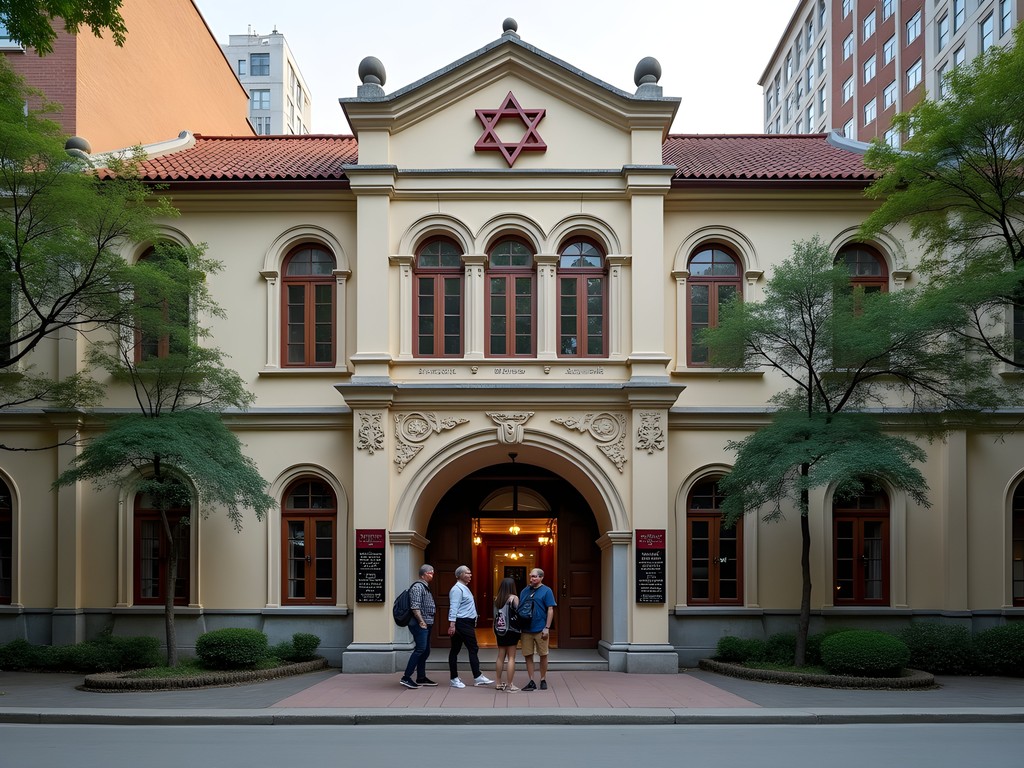
💡 Pro Tips
- Visit the Shanghai Jewish Refugees Museum first to get historical context before exploring the neighborhood
- Download the free audio guide from the museum website before your visit
- Consider hiring a specialized guide from the museum for deeper historical insights
8. Participate in a Traditional Lilong Breakfast
While Shanghai's international brunch scene thrives, one of my most authentic cultural experiences came through participating in a traditional lilong (neighborhood) breakfast in the Jing'an district. This wasn't an organized tour but a genuine community gathering that Lin's childhood friend's grandmother invited us to join.
Every morning from 6:00-8:00am, residents of this particular longtang gather in a small communal courtyard where portable stoves, worn wooden tables, and decades-old bamboo steamers create a pop-up breakfast club that has operated informally for generations. Elderly neighbors take turns preparing different specialties – the day we visited featured Auntie Wang's legendary ci fan (rice rolls) and Uncle Li's you tiao (fried dough sticks) served with fresh soy milk.
What makes this experience culturally significant is how it represents Shanghai's distinctive breakfast traditions that blend influences from various Chinese regions, reflecting the city's history as a migration hub. The communal nature of the meal – where ingredients, cooking duties, and stories are shared – offers insight into how urban communities maintain connection despite rapid modernization.
As we sat on small stools balancing bowls of steaming congee topped with century eggs and pork floss, neighbors inquired about our backgrounds and shared neighborhood gossip. Though Lin translated the major points, much communication happened through the universal language of food appreciation. When I successfully demonstrated the proper technique for dipping you tiao into soy milk, approving nods suggested I'd passed some unspoken cultural test.
For travelers seeking authentic experiences, I recommend bringing a small gift (fresh fruit is appropriate) and asking your hotel concierge about lilong breakfast opportunities in neighborhoods away from major tourist areas. Some longtangs are more welcoming to visitors than others, so local connections are invaluable.
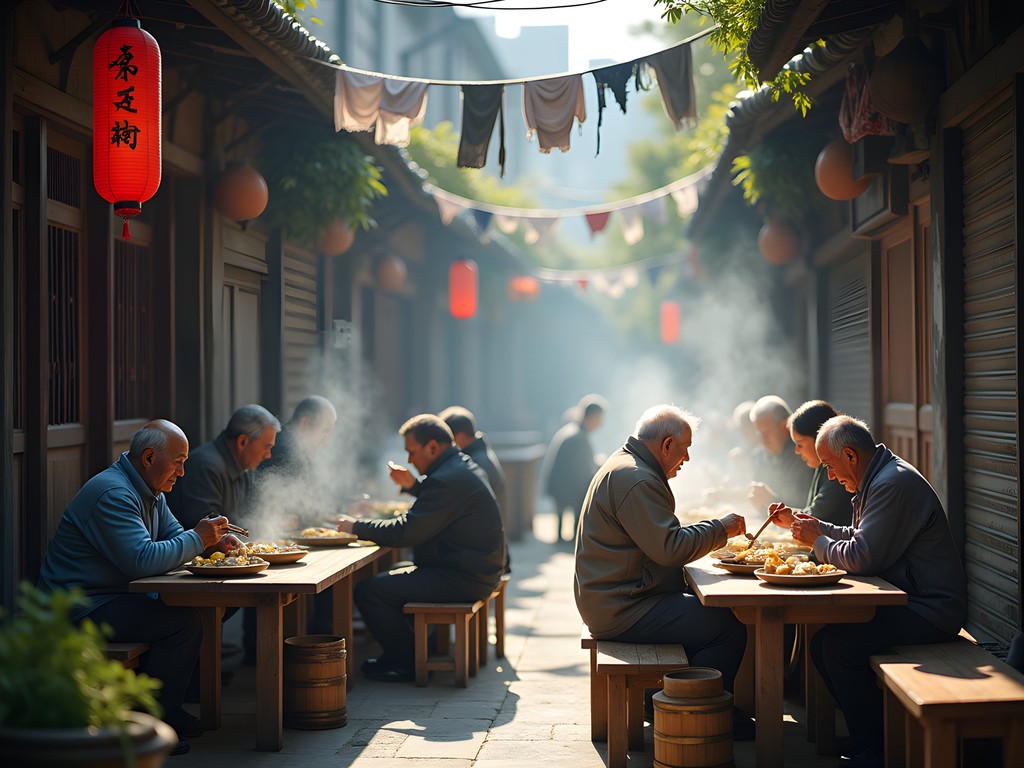
💡 Pro Tips
- Arrive early (before 7am) when the breakfast gathering is most lively
- Bring small denominations of yuan as each dish typically costs 3-10 RMB
- Learn basic food-related phrases in Mandarin to enhance the experience
9. Discover Traditional Medicine at the Yu Yin Tang Pharmacy
While most tourists visit Shanghai's gleaming hospitals showcasing medical technology, I sought to understand the traditional Chinese medicine (TCM) practices that have influenced global wellness approaches for centuries. The Yu Yin Tang Pharmacy in the old city has operated continuously since 1857 and offers a fascinating glimpse into living medical traditions.
Unlike tourist-oriented TCM demonstrations, Yu Yin Tang functions as a working pharmacy where Shanghainese residents consult with practitioners and receive customized herbal prescriptions. The interior remains largely unchanged from the Qing Dynasty – walls lined with hundreds of wooden drawers containing herbs, minerals, and animal-derived ingredients, while the distinctive aroma of medicinal plants permeates the space.
Through Lin's translation, I arranged a consultation with Dr. Chen, a fifth-generation TCM physician whose family has practiced at this location for over 150 years. The diagnostic process itself was a cultural education – Dr. Chen examined my tongue, checked six different pulse points, and asked detailed questions about sleep patterns and digestion that reflected TCM's holistic approach to wellbeing.
Particularly fascinating was watching the pharmacy assistants prepare prescriptions – measuring ingredients on traditional scales, processing herbs with antique cutting tools, and packaging remedies in brown paper as they have for generations. When I expressed interest in the process, Dr. Chen explained how each prescription balances opposing forces to restore harmony within the body – a philosophy that extends beyond medicine into Chinese cultural approaches to food, architecture, and social relationships.
For travelers with specific health interests, the pharmacy offers travel tea sets with common medicinal blends addressing jet lag, digestive issues, and travel fatigue – practical souvenirs that connect to living traditions rather than tourist trinkets.
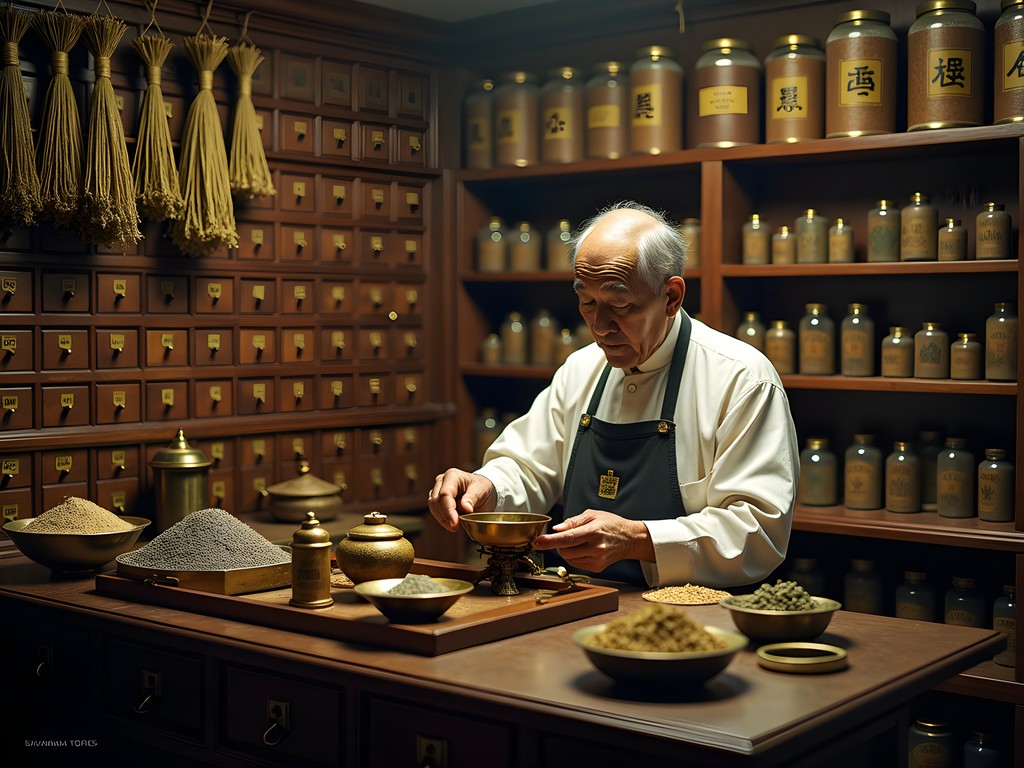
💡 Pro Tips
- Visit mid-morning when the pharmacy is active but not overcrowded
- Arrange for a translator if you want a consultation (the pharmacy staff speaks limited English)
- Photography is permitted in the main area but not during private consultations
10. Experience Water Town Life in Zhujiajiao
While technically just outside Shanghai proper, no cultural exploration of the region would be complete without experiencing Zhujiajiao, the best-preserved water town reflecting how Shanghai and its surroundings existed before modernization. Rather than joining standard day tours, Lin and I arranged an overnight stay that allowed us to experience the town after day-trippers departed.
Often called "Shanghai's Venice," Zhujiajiao dates back over 1,700 years and is characterized by stone bridges arching over canals, whitewashed buildings with distinctive black tile roofs, and narrow lanes that have maintained their Ming and Qing Dynasty character. While certainly on the tourist map, authentic cultural experiences emerge in the early mornings and evenings.
We stayed at a small family-run guesthouse in a converted merchant's home, where our host Mrs. Wu prepared traditional water town cuisine featuring lake fish steamed with local herbs and rice grown in nearby paddies. Through Lin's translation, Mrs. Wu shared stories of how water town life has changed across her lifetime – from the hardships of the Cultural Revolution period to the economic benefits and challenges of tourism development.
The most meaningful experience came at dawn when we joined Mrs. Wu's husband for his morning routine – helping to pole a traditional wooden boat delivering vegetables to the town's floating market. As mist rose from the canals and elderly residents performed tai chi on stone bridges, I gained insight into the rhythms of water town life that have continued for centuries despite dramatic changes in the nearby metropolis.
For photographers, I recommend bringing a lightweight tripod for capturing the magical blue hour when lanterns reflect in the canals and day visitors have departed. These quieter moments reveal Zhujiajiao's authentic character beyond its postcard views.
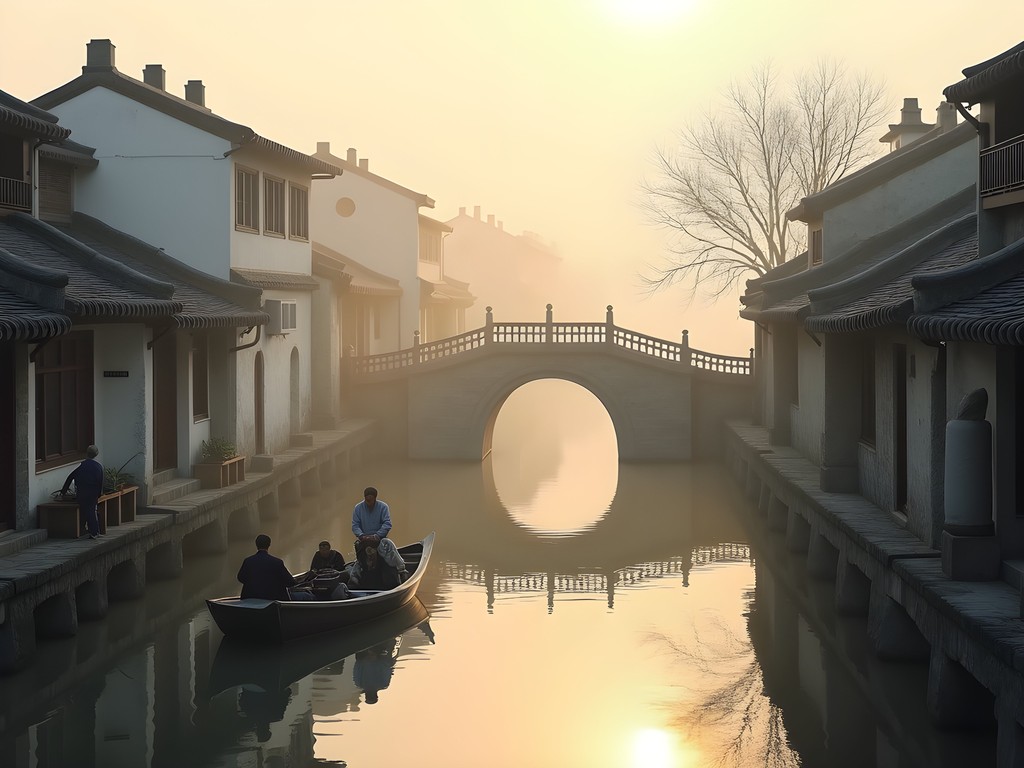
💡 Pro Tips
- Stay overnight to experience the town without day-tripping crowds
- Visit North Street early morning to see traditional breakfast vendors and local life
- Book accommodation in a traditional converted home rather than newer hotels
Final Thoughts
Shanghai reveals its authentic self to those willing to venture beyond its iconic skyline and tourist centers. These ten experiences offer windows into a city navigating the delicate balance between preservation and progress – a theme that resonates deeply with me as I've explored similar tensions in communities across the American Southwest. What makes Shanghai extraordinary isn't just its remarkable pace of development but how cultural traditions continue to thrive within its modern framework. As you plan your own Shanghai journey, I encourage you to seek these points of authentic connection – whether joining elderly residents for morning exercises, witnessing traditional crafts that have survived centuries of change, or simply sharing tea with locals away from tourist paths. These moments of genuine cultural exchange will transform your visit from mere sightseeing to meaningful understanding. Shanghai isn't just a destination to photograph but a living cultural landscape to experience with respect, curiosity, and openness.
✨ Key Takeaways
- Shanghai's most authentic experiences often lie in morning activities when locals dominate public spaces
- Connecting with residents through food provides natural cultural exchange opportunities even with language barriers
- The city's rapid modernization makes its preserved traditions and spaces especially valuable cultural experiences
- Venturing just beyond city limits reveals water towns that provide context for Shanghai's historical development
📋 Practical Information
Best Time to Visit
September-November (fall)
Budget Estimate
$75-150 per day excluding accommodations
Recommended Duration
5-7 days
Difficulty Level
Moderate

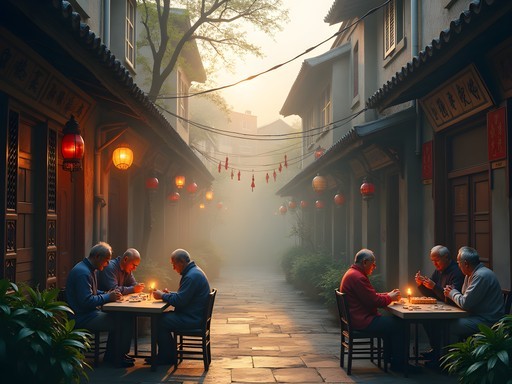
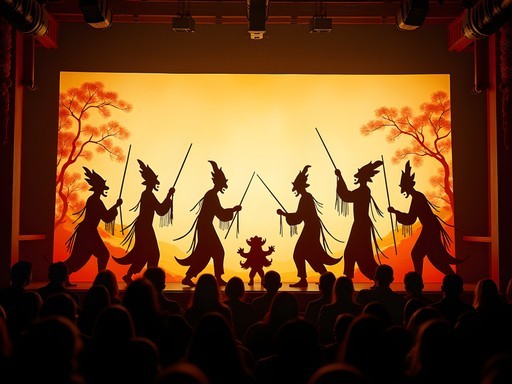
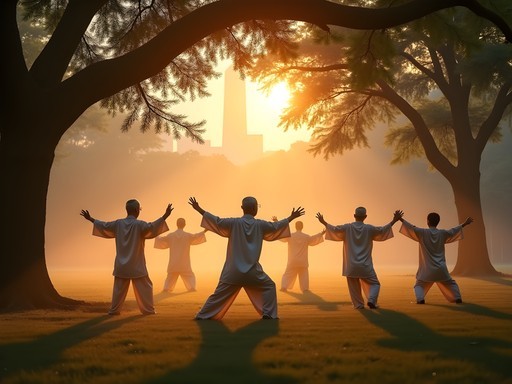
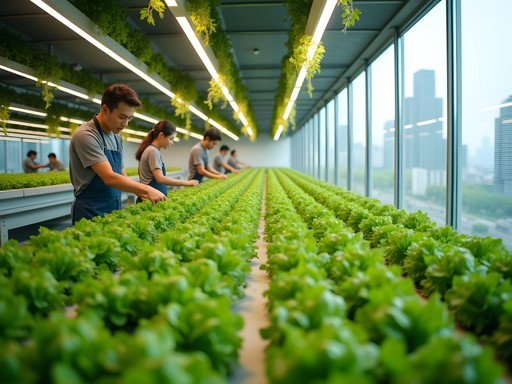
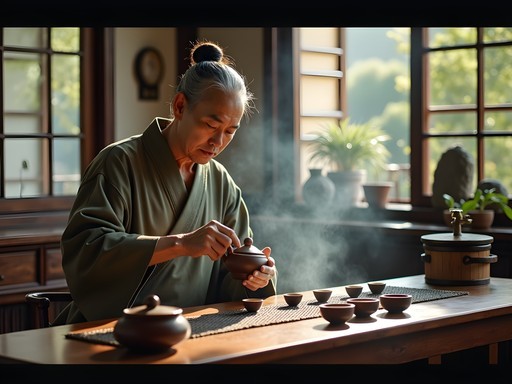
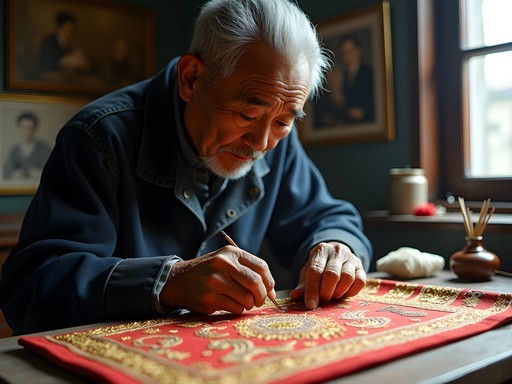



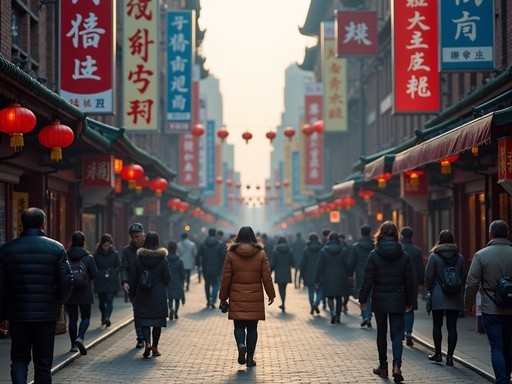

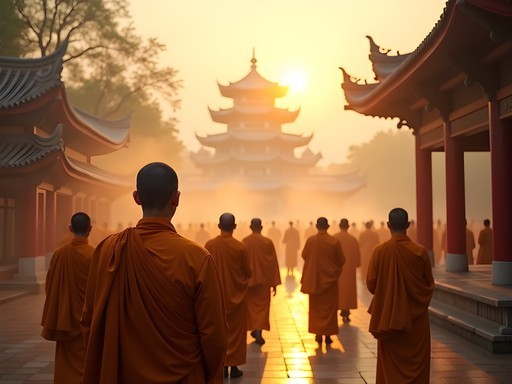

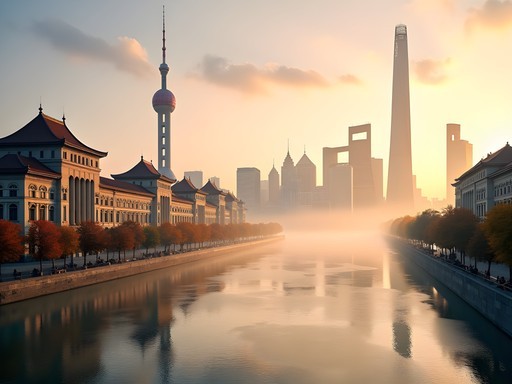
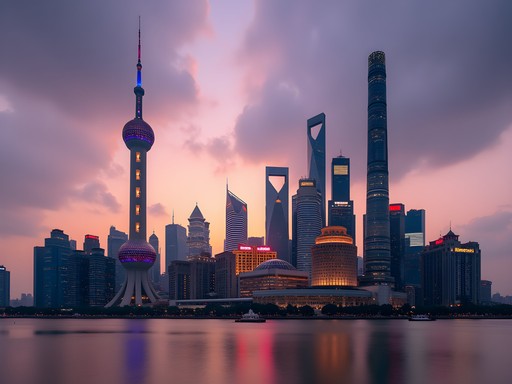
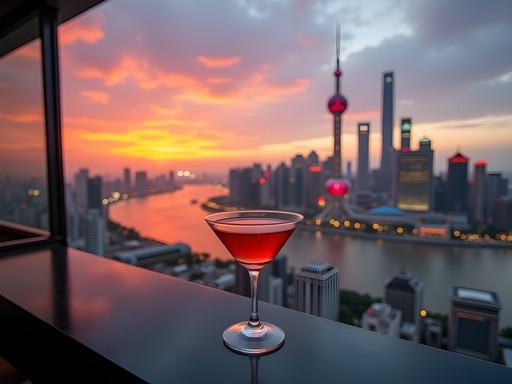
Comments
sunnyguide
Just booked my trip after reading this! Can't wait to check out the longtangs and that puppet theater.
oceanmate4754
First time going to Shanghai next month. Is it easy to navigate the metro system if you don't speak Chinese?
tripwalker
Super easy! All signs are in English too, and the ticket machines have English option. Just download the metro map to your phone before going.
sunnyking
That Tai Chi session looks so peaceful in your photos. Adding to my list!
Sage Dixon
Savannah, you've captured the essence of Shanghai beautifully! I led a small adventure group there last year and we focused entirely on these hidden cultural gems. The urban farming was particularly fascinating - we spent a morning at Sunqiao helping harvest vegetables and learning about vertical farming techniques. One spot I'd add to your list is the water towns just outside the city. Zhujiajiao is the most famous, but Qibao is actually closer and less touristy. We took a local cooking class there and learned to make hong shao rou (red braised pork) from an 80-year-old chef who'd been cooking the same recipe for 60+ years. His grandson translated while he showed us all his secret techniques!
oceanmate4754
How did you arrange the cooking class? Going in December and that sounds amazing!
Sage Dixon
We booked through a local guide named Wei. I'll DM you his contact info!
coffeeadventurer
Just got back from Shanghai and wish I'd seen this post before! We did manage to find a great tea ceremony in Tianzifang though. One tip for anyone going - download a VPN before you arrive as Google/Instagram/etc are blocked. I used ExpressVPN which worked perfectly for staying connected. The Tai Chi session in Gongqing Forest Park was a highlight for us too - we went at 6am and it was magical watching the mist rise over the trees as dozens of locals moved in perfect harmony.
mountainmood
Has anyone done the shadow puppetry experience? Wondering if it's worth it if you don't speak Chinese?
sunnyguide
Did it last spring! They have English programs on certain days. Check their website beforehand. The visual storytelling transcends language anyway!
mountainmood
Great to know, thanks!
Sophia Gomez
This post brings back so many memories! I was in Shanghai last year for a business conference and had an afternoon free. I stumbled upon one of those longtang neighborhoods completely by accident. An elderly lady was making dumplings outside her door and somehow, despite the language barrier, I ended up sitting with her for an hour learning how to fold them properly! Sometimes the best experiences happen when you put the map away and just wander. I'd also recommend the Propaganda Poster Art Centre - it's tiny and hidden in the basement of an apartment building, but absolutely fascinating.
sunnyking
That dumpling story is everything! Those unexpected moments are why we travel.
Sophia Gomez
Exactly! I still can't fold dumplings properly though 😂
tripwalker
Those longtangs sound amazing! Never knew about them despite visiting Shanghai twice.
journeyperson
Is the Shanghai Puppet Theater suitable for someone who doesn't speak Chinese? Will I still enjoy it?
islandbuddy
Definitely! The visual storytelling is amazing and they sometimes have basic English programs that explain the plot. The artistry transcends language barriers.
summerace
Great photos! The one of the shadow puppets is stunning.
Venture X
Premium card with 2X miles, $300 travel credit, Priority Pass